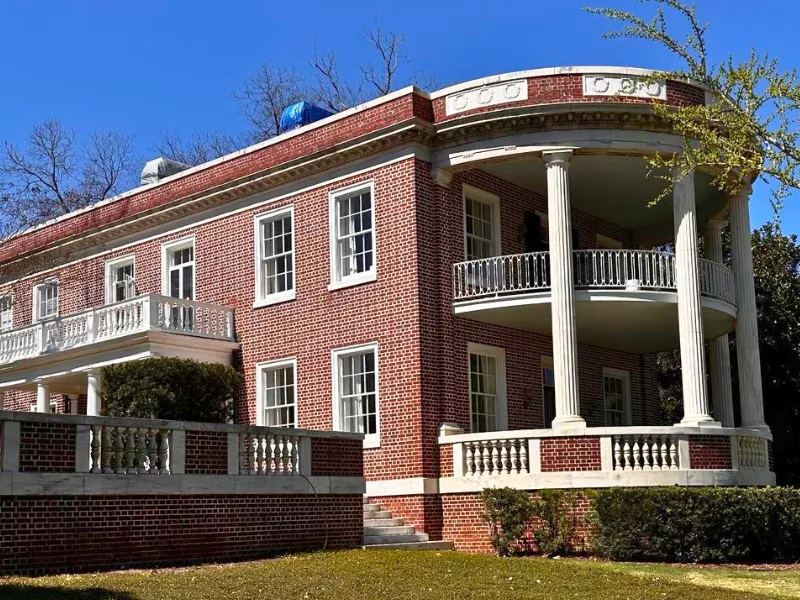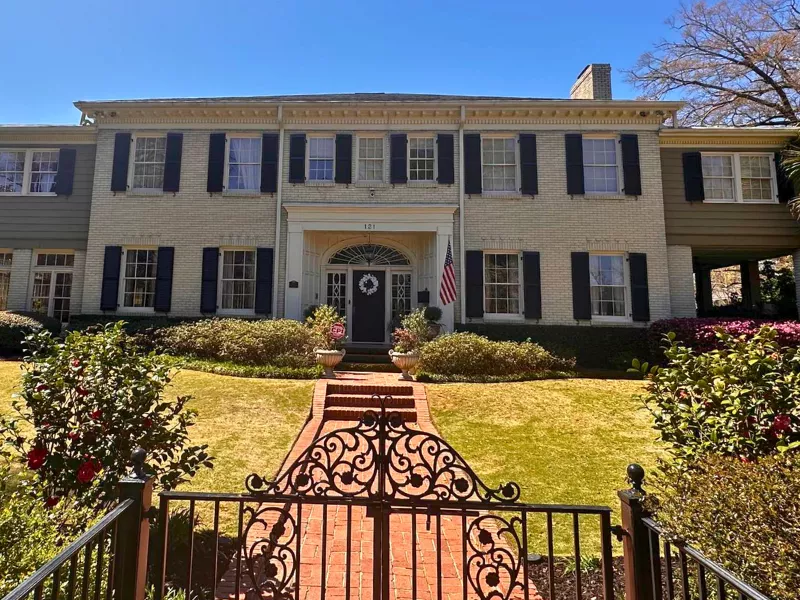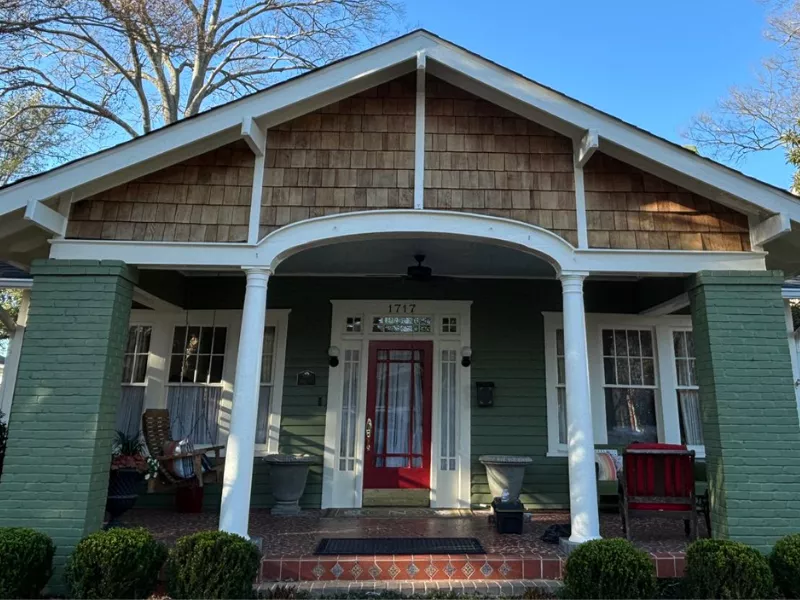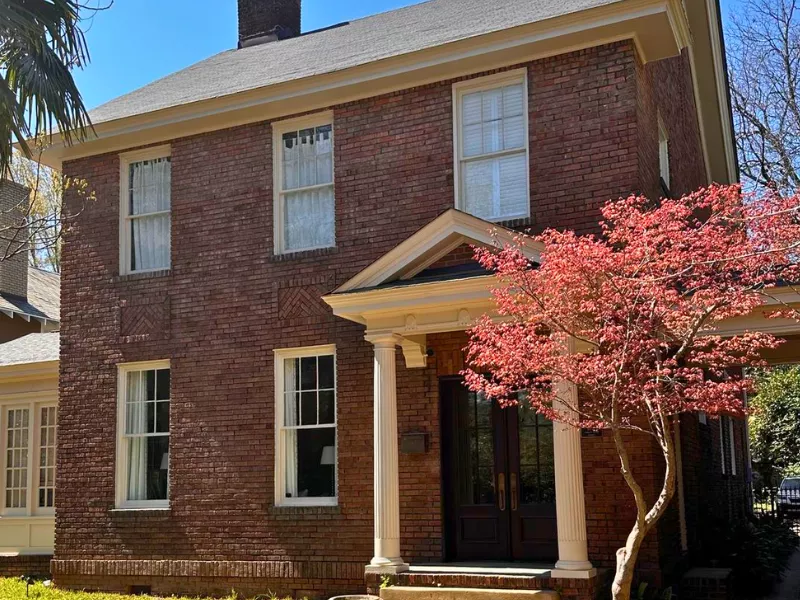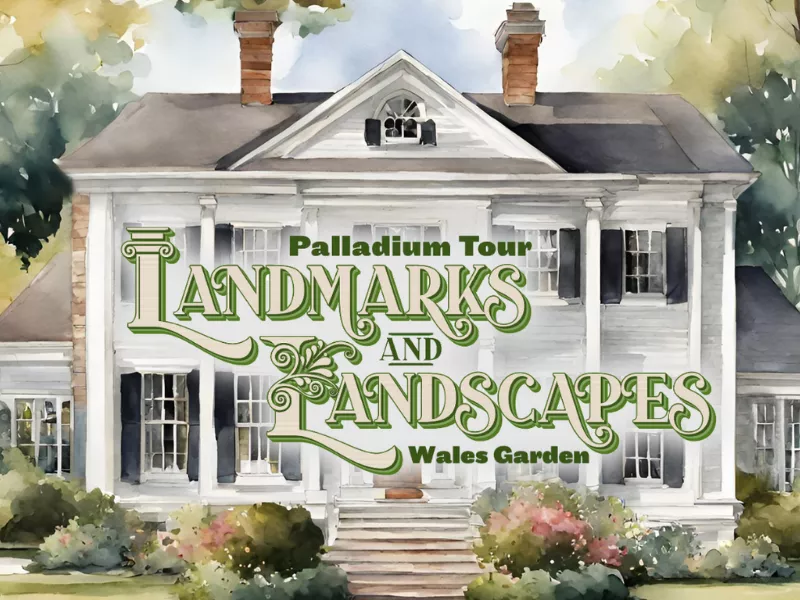101 Saluda Avenue
2024 Palladium Tour: Landmarks & Landscapes
101 Saluda Avenue
Dynamic in form and nuanced in detail, 101 Saluda Avenue traces its roots to an era of modernization in which the capital city experienced a building boom following World War II. When completed in 1951, the early Cold War-era residence—“built on spec” by Craig-Register, a company incorporated by lumber executive Robert E. Register, Jr. and real estate developer J. Wallace Craig—featured a notably different appearance than the one seen today.
Although the Columbia Development Corporation surveyed the entire neighborhood of Wales Garden in 1914, the western side of Saluda Avenue between Enoree and Lower (Heyward) streets (block “N”) remained undeveloped until the late 1930s. Of the three residences—101, 115, and 121 Saluda—this residence is the newest.
Inspection records and deeds confirm the builders as Robert E. Register, Jr. (1921-2009) and J. Wallace Craig (1914-2004), who partnered in 1951 to form Craig-Register. In addition to this residence, the pair also built and sold 31 Heathwood Circle and 3625 Tomaka Road in Heathwood, as well as 1230 Beltline Boulevard in Kilbourne Park.
Register grew up in the construction business. His uncle, Leonard Charles Register (1883-1954), founded Guy Lumber Company in 1931, and his father, Robert Sr. (1895-1980), served as the foreman. By the time Craig-Register incorporated about 1950, Robert Jr. was serving as Guy Lumber Company’s vice president. His business partner, J. Wallace Craig, was a real estate agent-turned-developer. Both men had previously served in the US Navy during WWII. Craig-Register dissolved in 1955, and Robert Jr. embarked on a successful, decades-long career as an interior designer. Craig later founded J. Wallace Craig Construction Company, which specialized in custom residences.
Craig-Register listed the home for sale in May 1951, shortly after its completion. It advertised a “den opening onto large porch,” and “connecting double garage,” as seen in the Sanborn Fire Insurance Map’s depiction of the residence in 1956.
The house sold quickly to Celia Jones Brown (1914-1994) and her husband, Dr. Charlton A. Brown (1913-1964). Throughout the 1950s and 1960s, Celia participated in the Ivy Garden Club and often hosted events. In 1964, Charlton died at home of a suspected heart attack. His wife and two young daughters remained at 101 Saluda Avenue; after Celia’s death in 1994, her daughters sold the residence as “primed for a renovation.” The advertisement’s suggestion to turn the garage into a primary bedroom has since come to fruition.
Celia Jones married dentist Charlton Brown in 1943. Eight years later, the couple became the first homeowners of 101 Saluda Avenue.
In the last 30 years, the residence has changed owners several times, most recently in 2020. The most notable addition that significantly altered the residence’s original character lies in what is today the home’s signature element. Between 2014 and 2019, construction of a two-story portico on the southeast corner of the home resulted in an elaborate formal entrance that belied a formerly modest stoop. Featuring slender Doric columns terminating in a quarter-circular, unadorned frieze and cornice, this visually imposing element provides access to both the home’s dining room via French doors and to its front foyer via a six-lite, two-panel door. Enclosure of a hyphen, which originally separated the residence’s two-car garage from the house, has created an expansive common room well illuminated by three banks of paired ten-lite doors. These changes, coupled with original windows, including a whimsical second-story wagon-wheel window, successfully merge old with new in a seamless manner that allows the building to read as if its additions date to the house’s date of construction.
The circa 2012 images above were pulled from CMLS listing 311244. Listing agent Christy Cole of Russell & Jeffcoat.















